Bioblitz Butterflies
What butterfly have I seen?
I want to know what the caterpillar develops into.
How do I determine species?
I should have an app!

For the moment the app includes a complete encyclopedia regarding dayflying butterflies and almost complete regarding their larva. We define “Dayflying butterflies” as the traditionall butterflies but we also include the most common moths which are active during daytime. This makes the app contain more species than books on the subject.
We only have species which occurs in Sweden. This will be extended later.
We like all small animals so in future we will add other insects.
Which butterfly is it?
1. Choose the type of insect you have in front of you or in the photo.
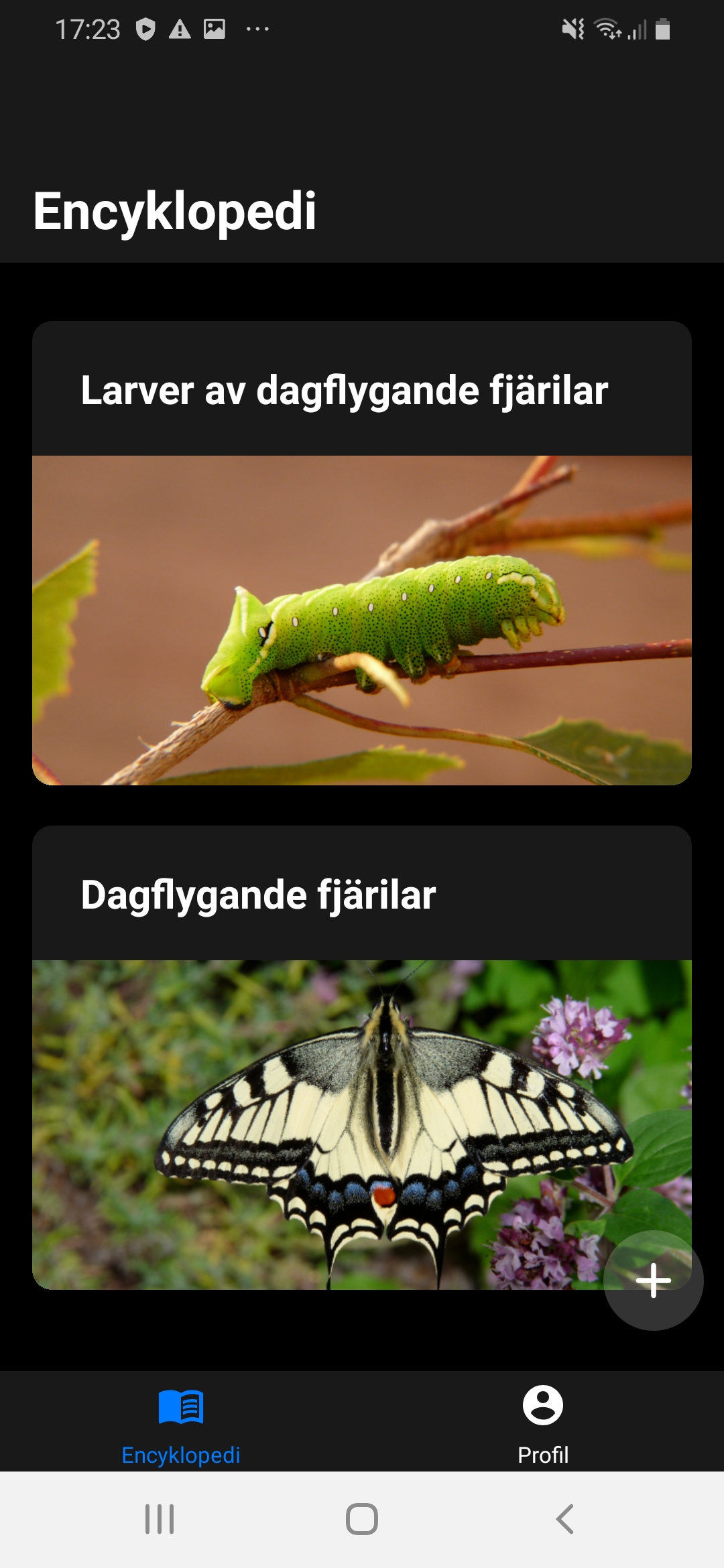
2. You can browse in traditional taxonomic order by families and species.
Or you can browse for photos and descriptions.
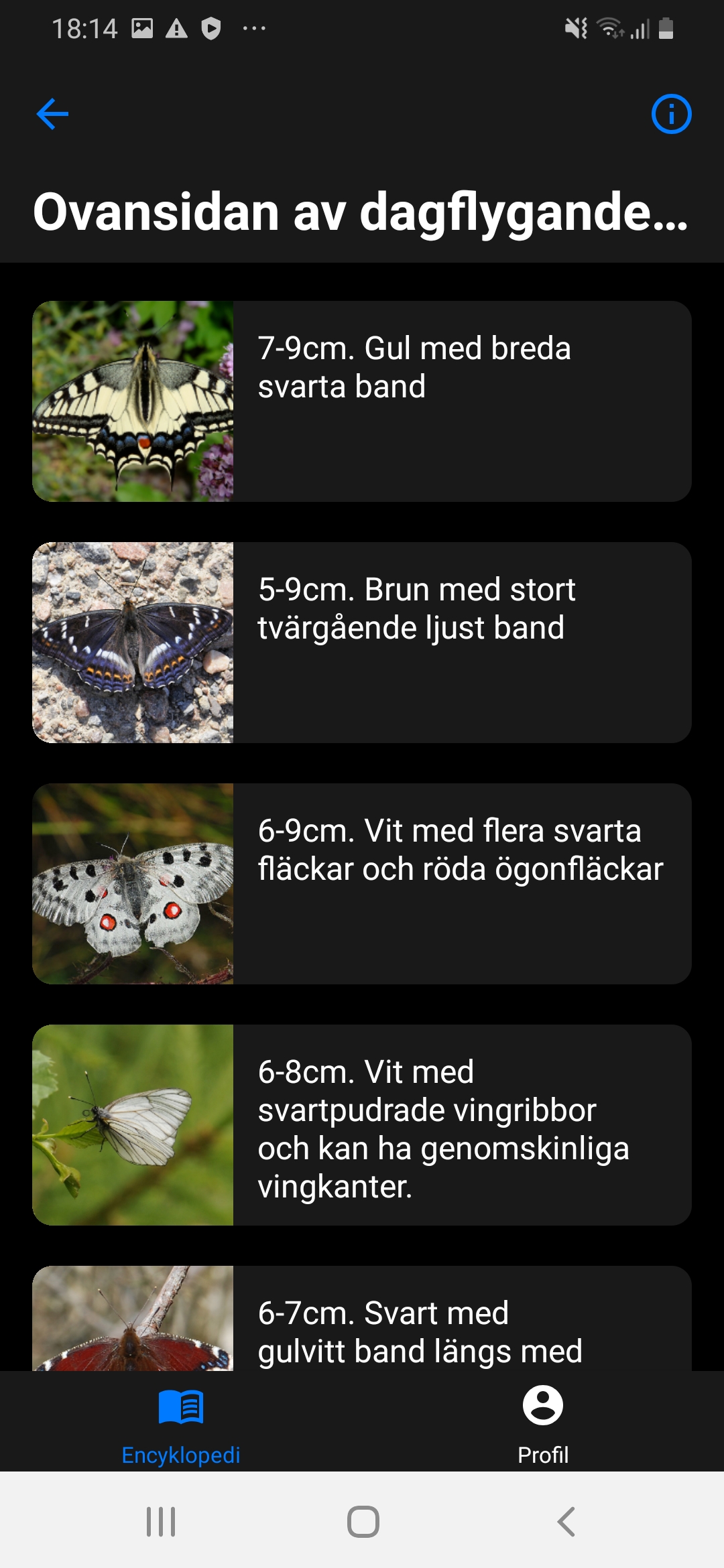
3. Similar species are displayed next to each other with large photos and text that describe what distinguishes them from each other.
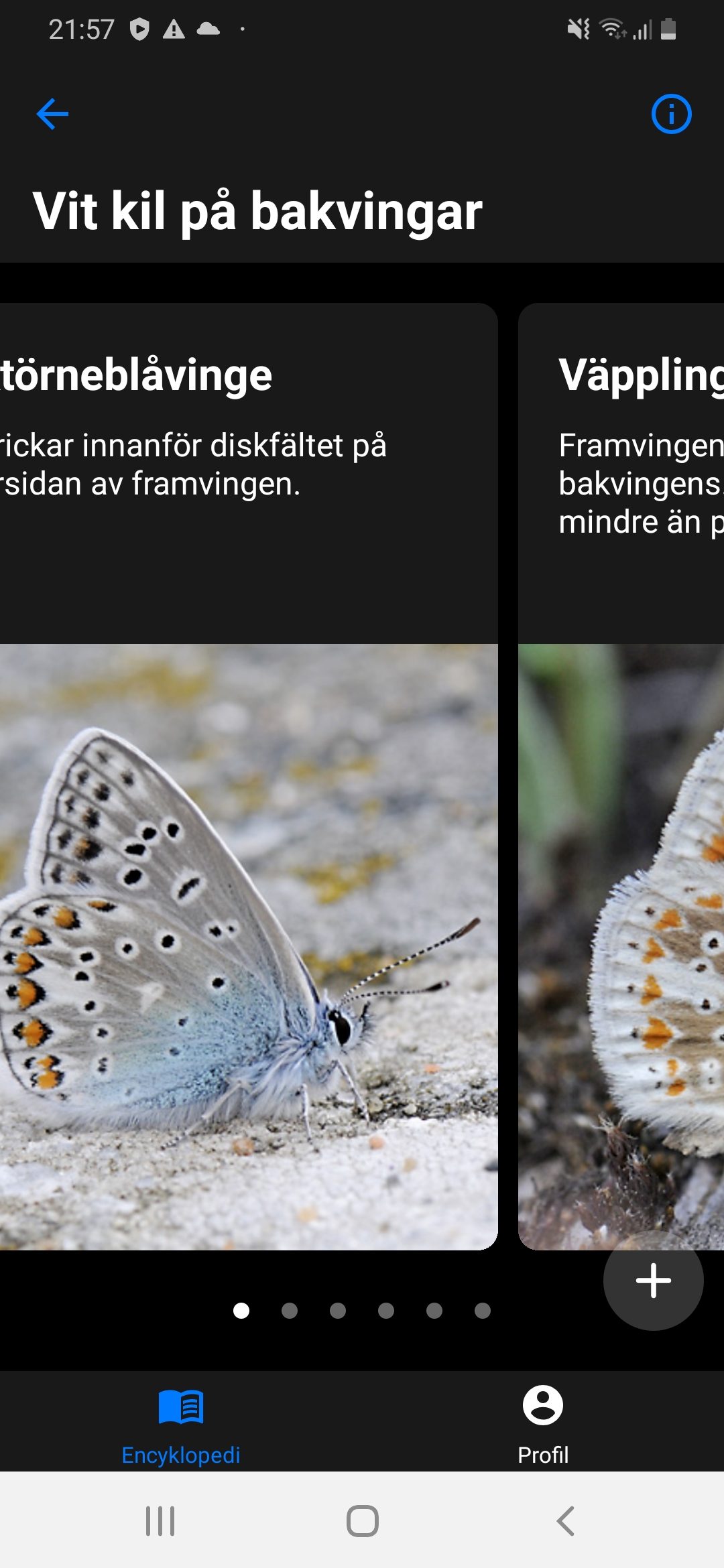
4. When you have found the right butterfly, you will see photos of both the larva and the adult butterfly and receive brief information.
Link to more detailed information is available including a link to the species portal.
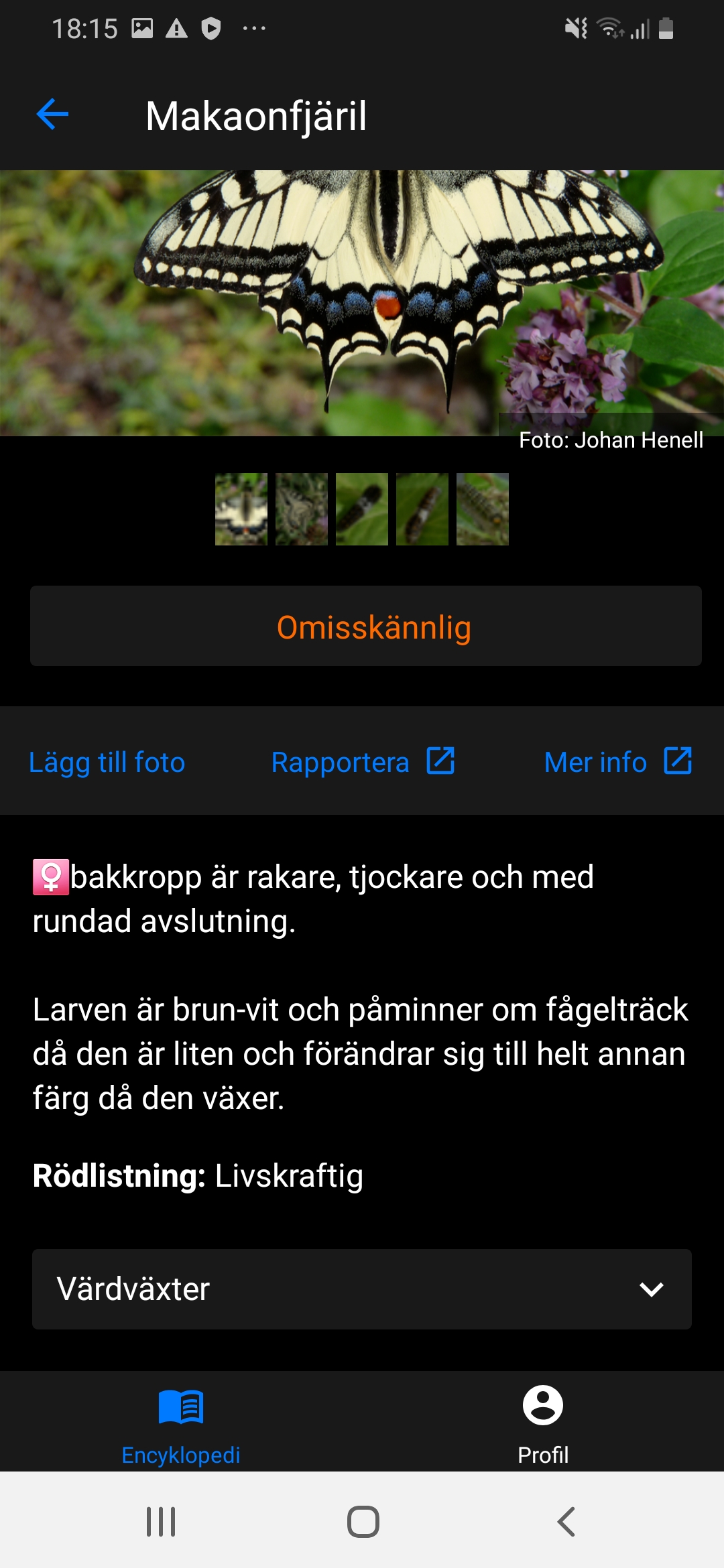
Larva is at least as important!
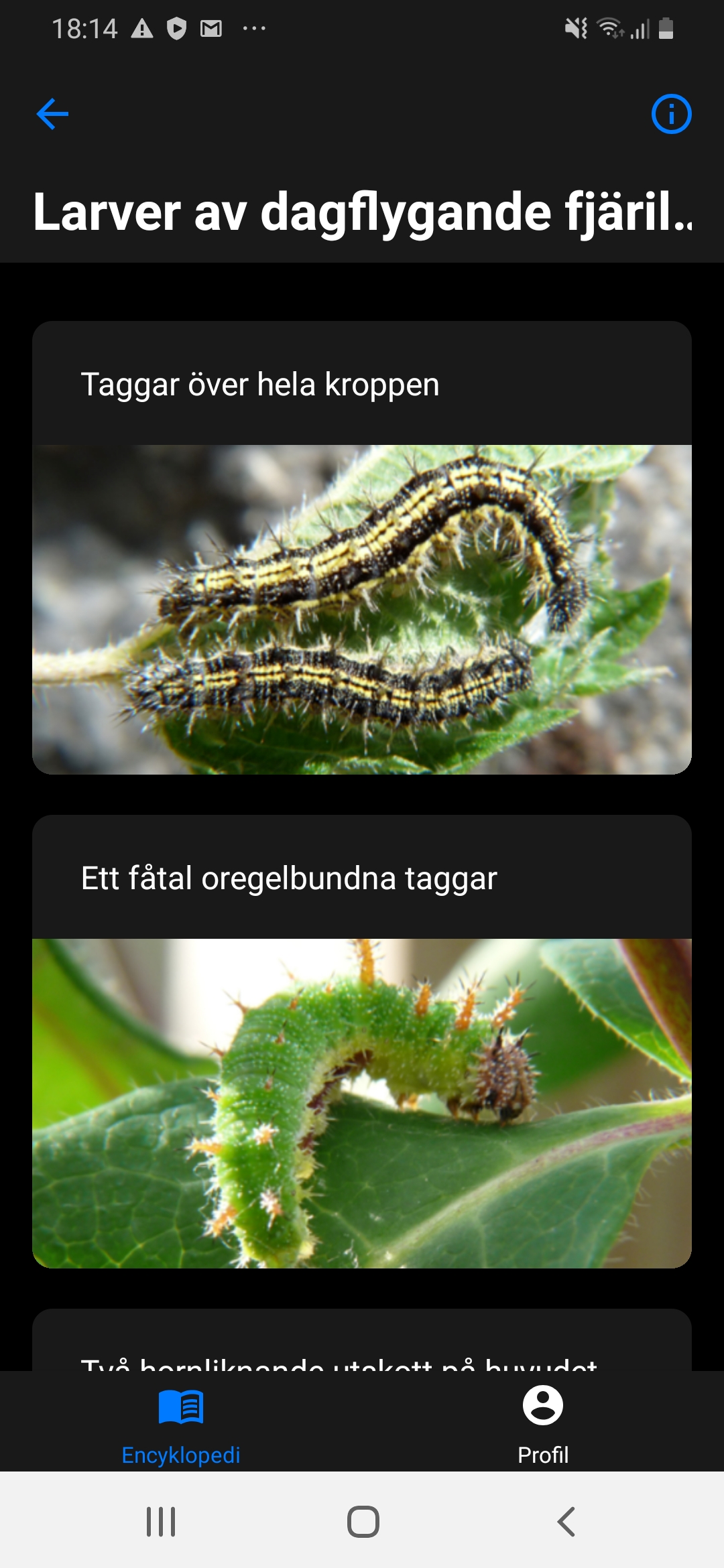
Do you, like us, think that butterfly caterpillars in literature are usually treated secondarily, sporadically and with substandard illustrations?
Our aim is to change this and set a new and higher level for information about butterfly larva. Because they are fun, interesting and important.
Unique in Bioblitz is that we have a key for species identification of butterfly larvae. If you have no idea about family affiliation, you can use photos and prompts to click your way to the right species.
If you come to similar species, they appear the same as the butterflies with larger images and more text which describes their unique characters.
Which ones can live in my garden?

When you find a caterpillar and via photos and help text found which species it is, of course, list its host plants.
Winged butterflies can travel long distances and visit your garden, but if you want to help biodiversity even more, you plant plants which their larva can eat. Most of a butterfly’s life is a larva and can then not get many meters but must find its food nearby.
In the app you can also find out which butterfly larvae live on your plants. Search for the plant’s Latin name and you will get a clickable list of which butterflies it is.
Fully usable at no cost!
That butterfly book you have lying around at home is certainly good, but is it always with you when it is needed?
Is it faster to key in the right species in an app than to browse a book? We believe so.
Bioblitz is expanded and supplemented gradually without you paying extra for it.
If you pay, you will get more content if you help us further develop the app, but Bioblitz is fully usable at no cost.
We want Bioblitz to be used and our hope is to help more people gain an interest in our insects. Therefore, the free version is fully usable.


